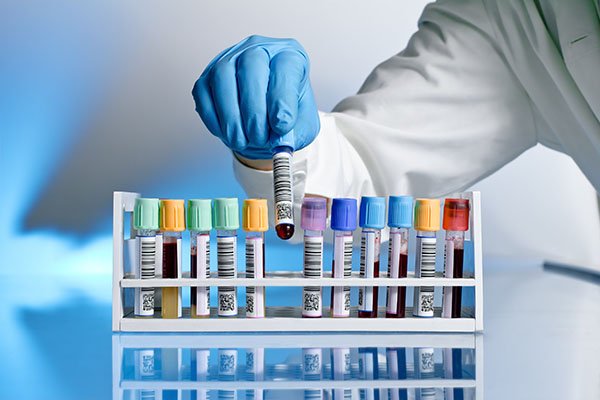Strategies for Optimizing Supply and Equipment Management in Pathology Departments: A Look at US Hospitals
Summary
- Hospitals in the United States are implementing various strategies to optimize supply and equipment management in the pathology department.
- Technology plays a crucial role in streamlining processes, reducing costs, and improving efficiency in the management of supplies and equipment.
- Collaboration between different departments, data analysis, and regular training are essential components of successful supply and equipment management in hospitals.
Introduction
In hospitals across the United States, efficient supply and equipment management is critical for providing quality patient care. The pathology department, in particular, relies on the availability of supplies and equipment to accurately diagnose and treat diseases. In recent years, hospitals have been implementing various strategies to optimize supply and equipment management in the pathology department, with a focus on reducing costs, improving efficiency, and enhancing patient outcomes. This article explores the strategies that hospitals in the United States are employing to achieve these goals.
Technology
Technology plays a significant role in optimizing supply and equipment management in the pathology department. Hospitals are increasingly investing in software solutions and automation tools to streamline processes and improve inventory management. Some of the key technologies being utilized include:
Inventory Management Software
- Many hospitals are implementing inventory management software that allows them to track supplies and equipment in real-time.
- This software can help hospitals optimize inventory levels, reduce wastage, and ensure that critical supplies are always available when needed.
RFID Technology
- RFID technology is being used to track supplies and equipment more effectively.
- With RFID tags, hospitals can quickly locate items, monitor usage patterns, and prevent loss or theft.
Data Analytics
- Data analytics tools are enabling hospitals to analyze supply and equipment usage data to identify trends and make informed decisions.
- By leveraging data insights, hospitals can optimize inventory levels, forecast demand more accurately, and reduce costs.
Collaboration
Efficient supply and equipment management in the pathology department require collaboration between various stakeholders within the hospital. Departments such as pathology, procurement, finance, and IT need to work together to ensure that supplies and equipment are managed effectively. Some strategies for promoting collaboration include:
Cross-Departmental Meetings
- Regular meetings involving representatives from different departments can help facilitate communication and coordination.
- These meetings provide an opportunity to discuss challenges, share best practices, and align goals to optimize supply and equipment management.
Collaborative Decision-Making
- Involve stakeholders from different departments in the decision-making process regarding supply and equipment management.
- By collaborating on decisions, hospitals can ensure that the needs of all departments are considered, leading to more effective management practices.
Training and Education
Regular training and education are crucial for optimizing supply and equipment management in the pathology department. Hospital staff need to be adequately trained on proper inventory management practices, equipment usage, and safety protocols. Some strategies for promoting training and education include:
Workshops and Seminars
- Organize workshops and seminars to provide staff with updated information on supply and equipment management best practices.
- These sessions can help improve staff knowledge and skills, leading to more efficient management processes.
Continuous Learning Opportunities
- Encourage staff to engage in continuous learning opportunities, such as online courses or certifications related to supply and equipment management.
- By investing in staff development, hospitals can build a skilled workforce capable of optimizing supply and equipment management practices.
Conclusion
Optimizing supply and equipment management in the pathology department is essential for hospitals in the United States to ensure quality patient care and operational efficiency. By implementing technology solutions, promoting collaboration between departments, and providing continuous training and education to staff, hospitals can achieve their goals of reducing costs, improving efficiency, and enhancing patient outcomes. These strategies are crucial for hospitals looking to stay ahead in an increasingly competitive healthcare environment.

Disclaimer: The content provided on this blog is for informational purposes only, reflecting the personal opinions and insights of the author(s) on the topics. The information provided should not be used for diagnosing or treating a health problem or disease, and those seeking personal medical advice should consult with a licensed physician. Always seek the advice of your doctor or other qualified health provider regarding a medical condition. Never disregard professional medical advice or delay in seeking it because of something you have read on this website. If you think you may have a medical emergency, call 911 or go to the nearest emergency room immediately. No physician-patient relationship is created by this web site or its use. No contributors to this web site make any representations, express or implied, with respect to the information provided herein or to its use. While we strive to share accurate and up-to-date information, we cannot guarantee the completeness, reliability, or accuracy of the content. The blog may also include links to external websites and resources for the convenience of our readers. Please note that linking to other sites does not imply endorsement of their content, practices, or services by us. Readers should use their discretion and judgment while exploring any external links and resources mentioned on this blog.
